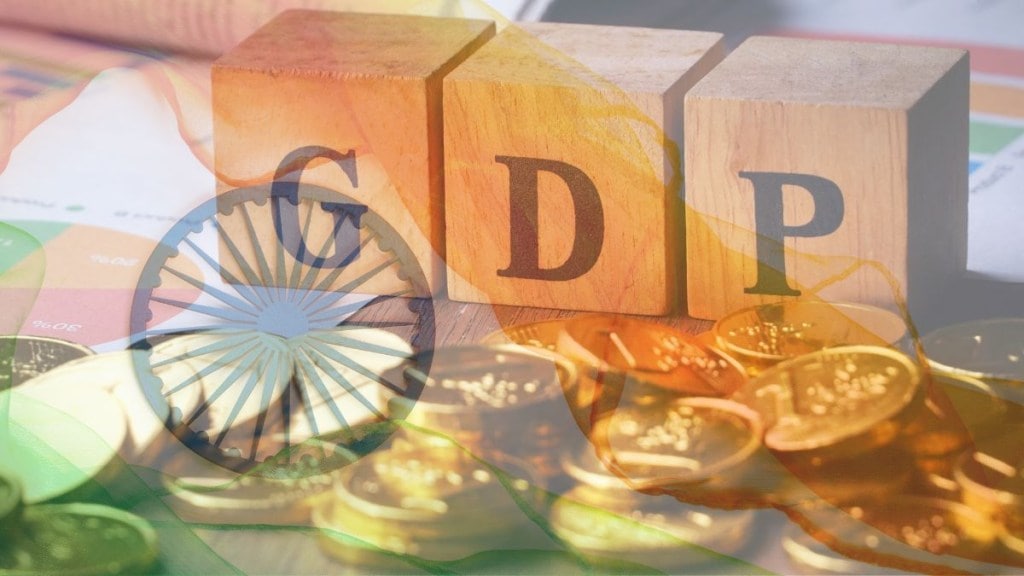By Saumitra Bhaduri & Shubham Anand, Professor and PhD scholar, Madras School of Economics, Chennai
India, one of the fastest-growing economies, stands at a crossroads. As it enters a new era of economic transformation, the country faces a delicate balancing act. Surging domestic consumption, falling savings, rising household debt, and widening inequality together paint a nuanced picture of the country’s economic health. While growth is robust, the path ahead demands prudent policy calibration.
India’s economic momentum is increasingly powered by its vast domestic market. Household spending surged by 12% in FY25, marking a departure from the historical average of 6.4%. Rural per capita spending outpaced that of urban India, hinting at broader economic participation.
This shift toward internal demand is highlighted by consumer spending’s contribution to GDP, now at 61.4%. For comparison, the US, a consumption-driven economy, sees household spending at 68% of GDP. This trend suggests India may be realigning from its traditional investment-led growth model.
However, the rise in consumption coincides with declining savings and inefficient capital utilisation. From the savings perspective, the rate has dropped to 30.7%, significantly lower than China’s average of 40%. This decline is driven by lower interest rates and the lure of quick returns from equities. The `1.8 lakh crore lost by retail traders during FY22-24 in the derivatives market has further eroded household savings.
From an efficiency perspective, the incremental capital output ratio (ICOR) at 5.3 indicates inefficiencies in capital deployment. Simply put, this means less economic output per unit of investment due to project delays, suboptimal allocation, and structural bottlenecks. Using a simple formula, growth rate = savings rate/ICOR.
With an ICOR of 5.3, achieving an 8% GDP growth would require a savings rate of 42.4%, far above the current 30%. Therefore, to sustain growth, India must boost savings or improve capital productivity.
A key trend accompanying rising consumption is the surge in household debt. The Reserve Bank of India’s (RBI) Financial Stability Report noted that the household debt-to-GDP ratio reached 42.9% in June 2024, up from 26% in June 2015. What is more concerning is that a growing share of this debt is used for consumption (“destructive debt”) rather than asset creation (“constructive debt”). For instance, non-housing retail loans, primarily for consumption, account for 54.9% of total household debt as of March.
The ease of access to credit, driven by aggressive lending from banks and non-banking financial companies, along with digital lending platforms and a growing fintech ecosystem, has significantly contributed to this surge.
Furthermore, this trend is particularly pronounced among lower-income households, where nearly half of loans finance daily expenses. Many middle-income households allocate up to 40% of their income to loan repayments and insurance, indicating that India’s consumption-led growth is largely debt-financed rather than supported by savings or increased disposable income.
Widening inequality further exacerbates this issue. The World Inequality Lab Report (2024) pointed out that growth in India is concentrated at the top percentiles. Lower- and middle-income households face stagnant real income gains, leading to increased borrowing to maintain consumption levels. This creates a perilous situation where consumption is driven by credit rather than genuine income growth.
While the RBI notes overall household balance sheet resilience, the accumulation of debt among lower-rated households demands rigorous oversight. Widening income disparities amplify this vulnerability, as lower- and middle-income households face greater debt risks. Any unforeseen economic shocks could quickly translate into widespread financial distress for these households.
Declining savings restrict domestic capital, increasing reliance on external flows, while rising debt servicing reduces discretionary spending, weakening demand-side stimuli. Improved credit access without adequate financial literacy has led many into unsustainable debt traps. Consequently, this “borrow-and-spend” cycle, if unchecked, risks creating a fragile economic foundation where growth is driven by debt rather than genuine income and savings.
To ensure sustainable growth, India must rebalance its economic drivers through a comprehensive approach. First, financial institutions should be encouraged to prioritise lending for asset creation over pure consumption, ensuring that constructive credit is equitably available for wealth generation. Second, policymakers need to enhance incentives for long-term financial savings, making them accessible across all income strata, particularly lower-income groups. Third, implementing targeted campaigns to educate households on responsible borrowing, debt pitfalls, and financial planning is crucial. Finally, continuous monitoring of household debt, particularly in vulnerable segments, is essential, with debt tracked alongside income growth patterns to identify financial vulnerabilities.
India’s economy is walking a tightrope between opportunity and risk. While consumption and GDP growth are promising, they are accompanied by worrying trends in debt, inequality, and efficiency. Long-term prosperity requires resilient, and inclusive development.
Without rebalancing, India risks building its economic future on a fragile foundation. The country’s macroeconomic evolution depends on its ability to adapt-balancing a consumption-driven population with structural discipline needed to build wealth, reduce inequality, and weather global shocks.

